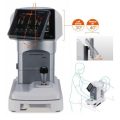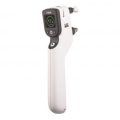-
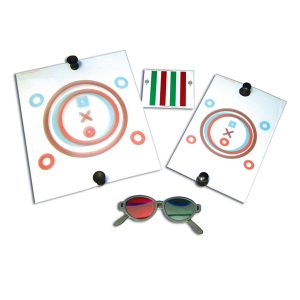
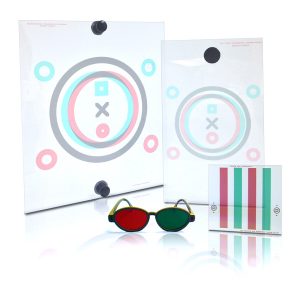 Red/Green TV trainer or can be placed on a printed page and used as a reading unit. Used to build binocularity in true space.
Red/Green TV trainer or can be placed on a printed page and used as a reading unit. Used to build binocularity in true space. -
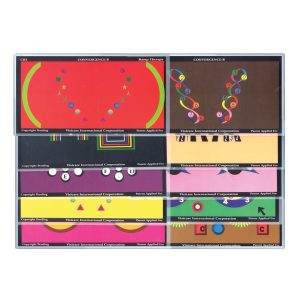 Morgenstern Color Fusion Cards - Convergence B DR ONLY USED WITH BERNELL-O-SCOPE™ BUILD LARGER RANGES OF VERGENCE. WORK IN AND OUT OF INSTRUMENT. GOOD FOR "TROMBONING" IN STEROSCOPE AS WELL AS "POINTING". SET OF 10 CARDS Item #: SMCB
Morgenstern Color Fusion Cards - Convergence B DR ONLY USED WITH BERNELL-O-SCOPE™ BUILD LARGER RANGES OF VERGENCE. WORK IN AND OUT OF INSTRUMENT. GOOD FOR "TROMBONING" IN STEROSCOPE AS WELL AS "POINTING". SET OF 10 CARDS Item #: SMCB -
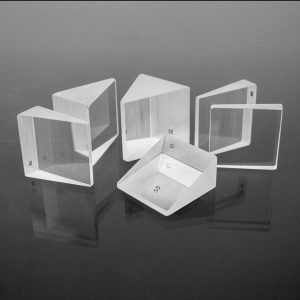 37mm square plastic prisms in your choice of diopter. Sold Individually. Item #: ASP+
37mm square plastic prisms in your choice of diopter. Sold Individually. Item #: ASP+ -
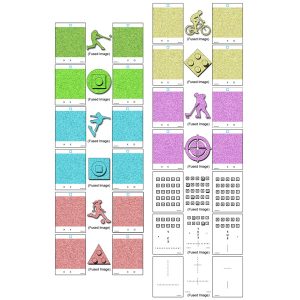 Random Dot card set for the Bernell-O-Phore. Set of 26 (13 pairs) full color cards. Each pair contains either a unique sport figure, shape pattern or numbered sequence. Images appear when fused. These fusion cards work with the BC300. Item #: BC300ES1
Random Dot card set for the Bernell-O-Phore. Set of 26 (13 pairs) full color cards. Each pair contains either a unique sport figure, shape pattern or numbered sequence. Images appear when fused. These fusion cards work with the BC300. Item #: BC300ES1 -
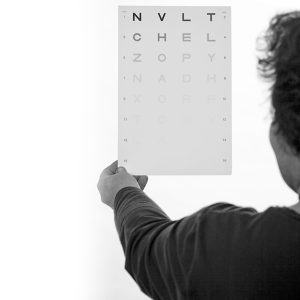
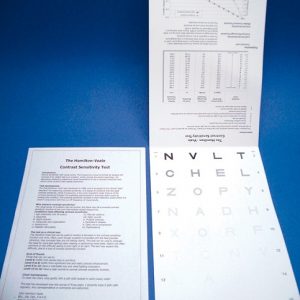 Hamilton-Veale Contrast Sensitivity Test This easy and convenient test can be used to monitor a decrease on the contrast sensitivity function over time. This test also demonstrates the difficulty of seeing in poor lighting or at night.
Hamilton-Veale Contrast Sensitivity Test This easy and convenient test can be used to monitor a decrease on the contrast sensitivity function over time. This test also demonstrates the difficulty of seeing in poor lighting or at night. -
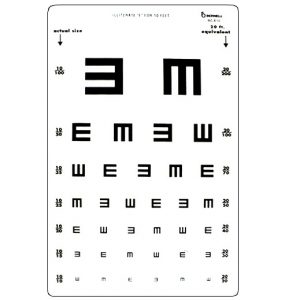 10/100 to 10/10 size. 9" x 14" size. See Tumbling "E" Pad (BCE) to make this an easier matching test.
10/100 to 10/10 size. 9" x 14" size. See Tumbling "E" Pad (BCE) to make this an easier matching test. -
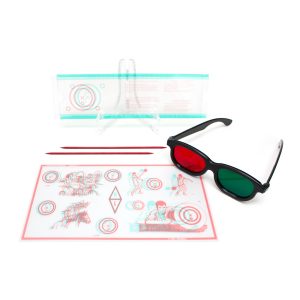 Variable Tranaglyph™ Kit (920 Series ) A simple cost-effective technique for improving fusional reserve. Variable prismatic trainer has a 40PD Base-In/Base-Out range.
Variable Tranaglyph™ Kit (920 Series ) A simple cost-effective technique for improving fusional reserve. Variable prismatic trainer has a 40PD Base-In/Base-Out range. -
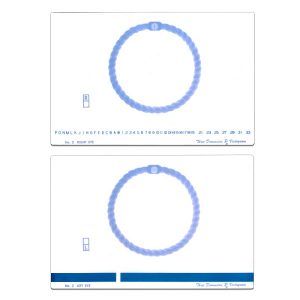 8-1/4" x 5-1/2" Polarized vectograms ensure testing and training at actual distances. vectograms stabilize fusion and stereopsis, eliminate suppression and develop simultaneous vision. Used in monocular, binocular, pursuit and saccadic training, vectograms help correct and prevent anomalies involving projection and hand-eye coordination. Ideal for use with Bernell Dual Polachrome™ Trainer
8-1/4" x 5-1/2" Polarized vectograms ensure testing and training at actual distances. vectograms stabilize fusion and stereopsis, eliminate suppression and develop simultaneous vision. Used in monocular, binocular, pursuit and saccadic training, vectograms help correct and prevent anomalies involving projection and hand-eye coordination. Ideal for use with Bernell Dual Polachrome™ Trainer -
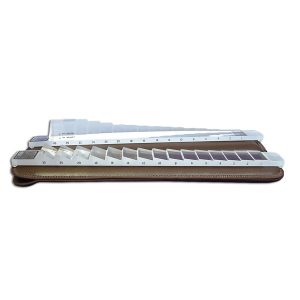 Set Includes Vertical prism bar with the following powers: 0.5, 1, 1.5, 2, 2.5 & 3 Horizontal prism bar with the following powers: 1, 3, 5, 10, 15 & 20 Item #: ACPS12
Set Includes Vertical prism bar with the following powers: 0.5, 1, 1.5, 2, 2.5 & 3 Horizontal prism bar with the following powers: 1, 3, 5, 10, 15 & 20 Item #: ACPS12 -
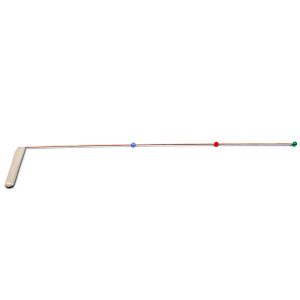 Copper Rod Ideal home training device for non-strabismics, esotropes with near centration point, and patients with other binocular vision problems. Three movable plastic beads on hand-held copper rod allows extensions of physiological diplopia techniques from 2" to 20'. Item #: BC1091
Copper Rod Ideal home training device for non-strabismics, esotropes with near centration point, and patients with other binocular vision problems. Three movable plastic beads on hand-held copper rod allows extensions of physiological diplopia techniques from 2" to 20'. Item #: BC1091 -
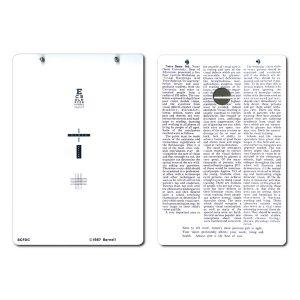 Variable slide adjust to determine fixation disparity or may be used with hand held prisms. Designed for phoroptor use. The card comes with a label which may be placed over the prism diopter scale for an additional scale in degrees. Reverse side of card includes reduced Snellen, fusional target and cross cylinder targets. 5-1/2" x 8" card and polarized goggle. Item #: BCFDC
Variable slide adjust to determine fixation disparity or may be used with hand held prisms. Designed for phoroptor use. The card comes with a label which may be placed over the prism diopter scale for an additional scale in degrees. Reverse side of card includes reduced Snellen, fusional target and cross cylinder targets. 5-1/2" x 8" card and polarized goggle. Item #: BCFDC -
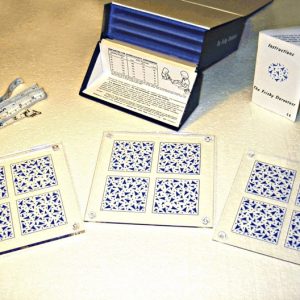 All Frisby Stereo Test Present "real depth" objects viewed with natural vision: no testing glasses are required. Each plate has four random-pattern squares with a circle of pattern elements lying in depth relative to its surround. The depth effect is due to the circle and its surround being printed on opposite sides of the plate. The Frisby Stereo Test has 3 plates allowing for testing stereo acuity disparity as fine as 15 seconds of arc.
All Frisby Stereo Test Present "real depth" objects viewed with natural vision: no testing glasses are required. Each plate has four random-pattern squares with a circle of pattern elements lying in depth relative to its surround. The depth effect is due to the circle and its surround being printed on opposite sides of the plate. The Frisby Stereo Test has 3 plates allowing for testing stereo acuity disparity as fine as 15 seconds of arc.

